Boston Children's Museum
308 Congress Street, Boston, MA 02210
617-426-6500
© Boston Children’s Museum 2025
Website Design by Jackrabbit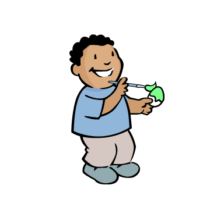
Before oil paints were invented, painters used egg yolks as an ingredient in their paint. Your kids can paint like the old masters by creating their own egg tempera paint. This activity is part of the Incredible Egg series of activities, which are designed to be done during the Spring—start your students off with some of the “egg science” activities, then move on to egg art, like this activity, and finally take the Egg Drop Challenge!
VIEW ACTIVITY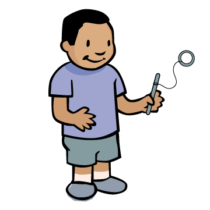
This activity introduces students to a Native American game called “Ring and Pin”. Almost every Native nation across North America has a version of Ring and Pin that children traditionally played, and sometimes still play. Some of the games have different names, and most of them use different materials. But what they have in common is that every Ring and Pin game is played basically the same way, and all of the games are designed to help children develop eye-hand coordination (and have fun!).
VIEW ACTIVITY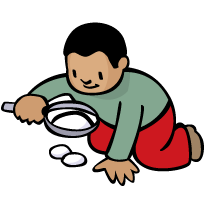
Spring is a time of rebirth and renewal—and eggs! Many animals lay and incubate eggs in the spring, and in some cultures spring is a time in which kids paint, hide and eat lots of eggs. This makes it a great time to not only take a close look at eggs, but also to experiment with some of the things we can do with them. This activity is part of the Incredible Egg series of activities, which are designed to be done during the Spring—start your students off with this and other “egg science” activities, then move on to egg art, and finally take the Egg Drop Challenge!
VIEW ACTIVITY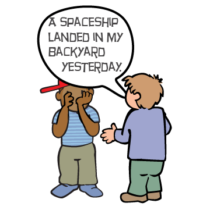
Open-ended creativity is natural for kids—adding teamwork to the mix makes this an activity that you’ll want to do over and over. Story Tag encourages quick thinking, creativity, focus, adaptability and practice of spoken language skills. It also helps children learn how to create clear sentences that help develop a central idea, and how a story develops from beginning to end.
VIEW ACTIVITY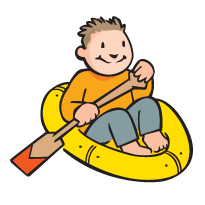
Games like Captain’s Coming and Simon Says are great ways to help children practice listening carefully to instructions. In this game children must learn and understand new vocabulary, they need to cooperate with their peers and they will get lots of great exercise—while they have a whole lot of fun!
VIEW ACTIVITY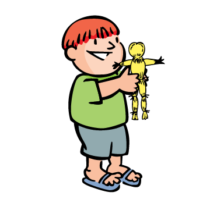
For the Wampanoag Tribal Nation in Massachusetts, summer brings many things to be thankful for—including corn! Corn is special to the Wampanoag, and making corn husk dolls is just one way that parts of the corn plant are traditionally used. Try out this activity that Wampanoag children and adults have been doing for many years (and if you like, you can call them “action figures” instead of dolls). Click here to watch a video of traditional Wampanoag corn husk doll making.
VIEW ACTIVITY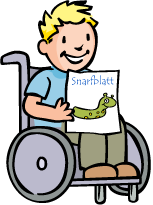
After being outside a few times, kids will know a lot more about the characteristics of the living things that inhabit their afterschool neighborhood. Focusing on what living things need (food, shelter/protection, methods of gathering food, etc.), this activity asks kids to invent a brand new creature that would be able to survive in the area around their afterschool. In the next activity, they have a chance to construct their new critter out of recycled material.
VIEW ACTIVITY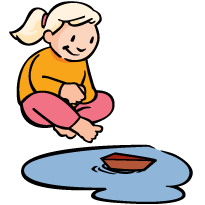
Designing and building small boats out of clay gives children a chance to practice critical observation skills, problem solving skills and communication skills as they work with their teammates. In addition, children are asked to manipulate an intrinsically interesting material that at first seems not quite right for the job—until they explore a little more and discover the possibilities.
VIEW ACTIVITY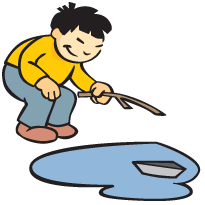
Even very young children can fold a sheet of aluminum foil into a shape that will float. Adapting the boat for improved performance requires a little more dexterity and an ability to observe and make conclusions about the materials and their functions. In addition measurement, record keeping and problem solving skills are all required in this simple activity.
VIEW ACTIVITY
Most children only have a basic understanding of their own bodies, and they often have little choice about what they are served at meals. At the same time, these children are just becoming acquainted with a variety of foods. The more opportunities children have to think about what they eat, be curious and adventurous in trying new foods and begin to take responsibility for their own lifestyle choices, the more likely they are to make healthful choices when they do get to decide what fuel they are putting into their bodies. In this activity, children will have a chance to create their own recipe for a dip that they will use to enhance the flavor of fruits and vegetables.
VIEW ACTIVITY